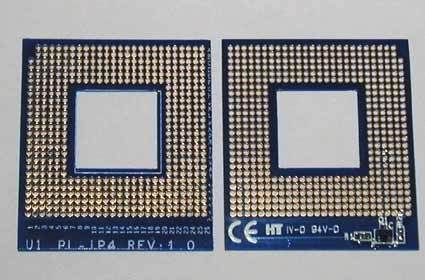Upgrading to Hyper-Threading? The PL-iP4 Adapter from PowerLeap
What Does Hyper-Threading Do?
The principle can be explained very easily: basically, HT organizes strings of instructions so that the pipelines of the Pentium 4 can be used more efficiently. The processor itself is not intelligent enough to run an adequate analysis, which would enable the strings of instructions to be reorganized on a large scale. Also, the processor never has a global overview of current and subsequent instructions.
With the operating system it's an entirely different story. The instruction strings, the threads, are processed in time intervals that are pre-set according to certain priorities. Even if this is done for the most part without taking either the processor type or the number of processors into account, these threads are distributed among all available processors. With its improved simultaneous processing of instructions and the distribution of work between two interfaces, HT makes considerably better use of the processor. The user benefits from the fact that several applications can run simultaneously, and with significantly fewer delays.
PL-iP4: Minimum Effort, Maximum Effect
The adapter from PowerLeap is very flat, so it fits easily between the Pentium 4 and Socket 478. With a height of only about one millimeter, it allows the usual cooling unit to be used as normal.
Get Tom's Hardware's best news and in-depth reviews, straight to your inbox.
Current page: What Does Hyper-Threading Do?
Prev Page Upgrading To Hyper-Threading: Review Of A CPU Adapter From PowerLeap Next Page Installation: A Matter Of Minutes
Patrick Schmid was the editor-in-chief for Tom's Hardware from 2005 to 2006. He wrote numerous articles on a wide range of hardware topics, including storage, CPUs, and system builds.
